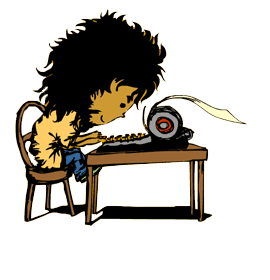Theme Park from Hell
- Shehan
- Jul 24, 2022
- 1 min read
Updated: Aug 30, 2022
National Geographic (c) 2012.
A visit to Singapore's strangest theme park.

The tiger looks like it's on drugs. The eyes are bloodshot swirls of green and yellow. The expression, a mixture of terror and orgasm. The creature crouches at the entrance of Haw Par Villa, not quite sure whether to pounce or collapse.
There aren't many places in clean, orderly Singapore that make you think of hallucinogens. But then again, there aren't many places anywhere that have statues of rabbits devouring rats, demons flirting with mermaids, or women breast-feeding their father-in-laws.
Haw Par Villa was built by two Burmese millionaire brothers, partly as an amusement park, partly as a homage to Chinese mythology. Originally called Tiger Balm Gardens, after the ointment that had made its founders rich, it's not a theme park that you'll find advertised on the tourist brochures. Neither is it one that you'll ever forget visiting.
It's a world viewed through a funhouse mirror. Where colours are skewed, figures elongated and reality placed off-kilter. Kitsch figures strike unusual poses on walls textured with melted rock, awash in garish maroons, yellows and blues.
Haw Par Villa boasts over 1000 statues and 150 dioramas, each with its own story and each one slightly more disturbing than the last. I wonder whether the Tiger Balm brothers, Aw Boon Haw and Aw Boon Par, were devout followers of Confucianism, eccentrics with too much cash or visionaries with a perverse sense of humour. Or an unusual combination of all three.
Haw Par's most infamous exhibit is the 10 Courts of Hell, the place where young Singaporeans are shown what happens to bad children. Go past the statue of the crouching tiger and you'll be greeted by a blue demon presiding over the severed heads of sinners and welcomed in by a horse dressed in robes and wielding a club.
For someone who's seen The Exorcist 11 times, a kiddie's version of purgatory shouldn't have posed too many problems. But this is no PG-rated spook show. This is a human slaughterhouse built with clay, porcelain and a pinch of sadism.
Each court outlines a mortal sin and then displays hapless figurines suffering its consequences. According to the printed legend, gossips will get their tongues pierced, those who disrespect their elders will get their eyes torn out and those who write erotic literature will have their "skull steamed, bones scraped and tendons pulled out."
I'm not sure what's more shocking. The rivers of blood and gore or the poor toddlers being led across them by loving parents. This may explain why Singaporeans grow up to be obedient, law-abiding citizens. And why none of the locals wished to accompany me on my visit to Haw Par Villa.
But it's not all gruesome. Some of it is downright weird. First there's the Buick with the head of a tiger on its bonnet, driven around Singapore by the brothers in their heyday. Then there's the crab with the lady's head, the adultery tale involving a pig in a suit and a deer in a nightie and of course, the Chinese lady offering her breast to her father-in-law.
The Garden of the 8 Immortals is perhaps more orthodox, though not by much. There's a potbellied Buddha laughing next to the Statue of Liberty. The bearded gods of happiness, wealth and longevity, grinning at monkeys with rifles and bears playing saxophones. Everywhere you look is a shock of colour and a glimpse of the bizarre. A mix of creativity and craziness.
My favourites are the colossal demon heads that tower over visitors on the back wall. The 30-foot faces are majestic and utterly terrifying. And while most exhibits outline the folklore that inspired it, the demon masks offer only their hypnotic stare by way of explanation.
Since the death of the Tiger Balm brothers in the 1950s, Haw Par Villa has changed hands many times. While its water rides and dragon boats enjoyed popularity in the 60s and 70s, the park suffered heavy losses in the 90s and was threatened with closure.
Abandoned for many years, today its new management lets in visitors for free. The Haw Par Villa MRT station has opened next door and freshly restored exhibits belie the claim that the park is falling into disrepair.
While its gaudy aesthetic and kitschy sensibility may not be in keeping with Singapore's relentless drive to modernity, it would be a tragedy if Haw Par Villa were bulldozed to make way for a multiplex or a gaming arcade.
Despite its secular exterior, Singapore is a country steeped in superstition. Myth and folklore is very much part of a culture that celebrates a Hungry Ghost Festival every August and gives birth to numerous paranormal societies.
Tourist brochures may gloss over these oddities in favour of glossier, more Westernised theme parks. But for curious adventurers, Haw Par Villa is a fascinating and beguiling experience. And for those who think Singapore is one large shopping mall, it's proof that the city does indeed have a soul. Though perhaps one slightly more quirkier than expected.




Comments